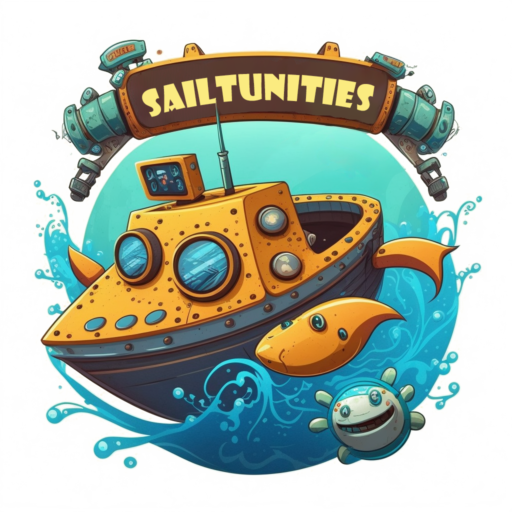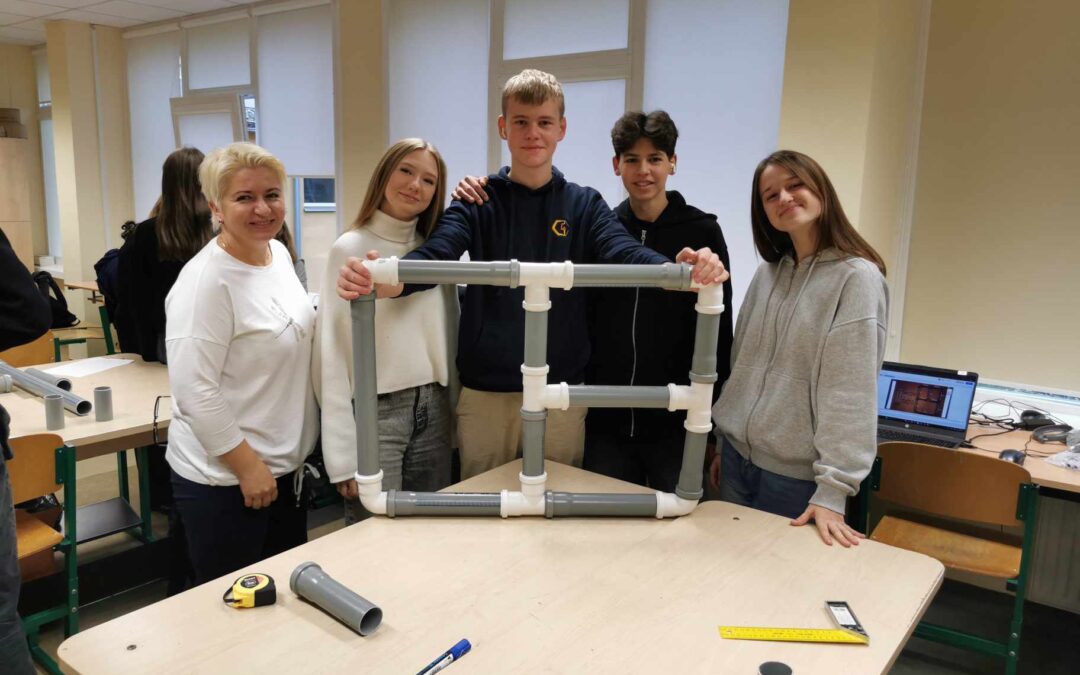The “Sailing into Opportunities” project at Vilnius Joachimas Lelevelis Engineering Gymnasium has gained momentum. Students are developing remotely controlled robot boats that can navigate water bodies and collect data on water clarity, temperature, pH level and other parameters.
Currently, a group of students, together with the teachers of computer science, physics and engineering, have already created six frameworks of the boats and are preparing to begin the most important stage of their development – the installation of electronics, sensors and software.
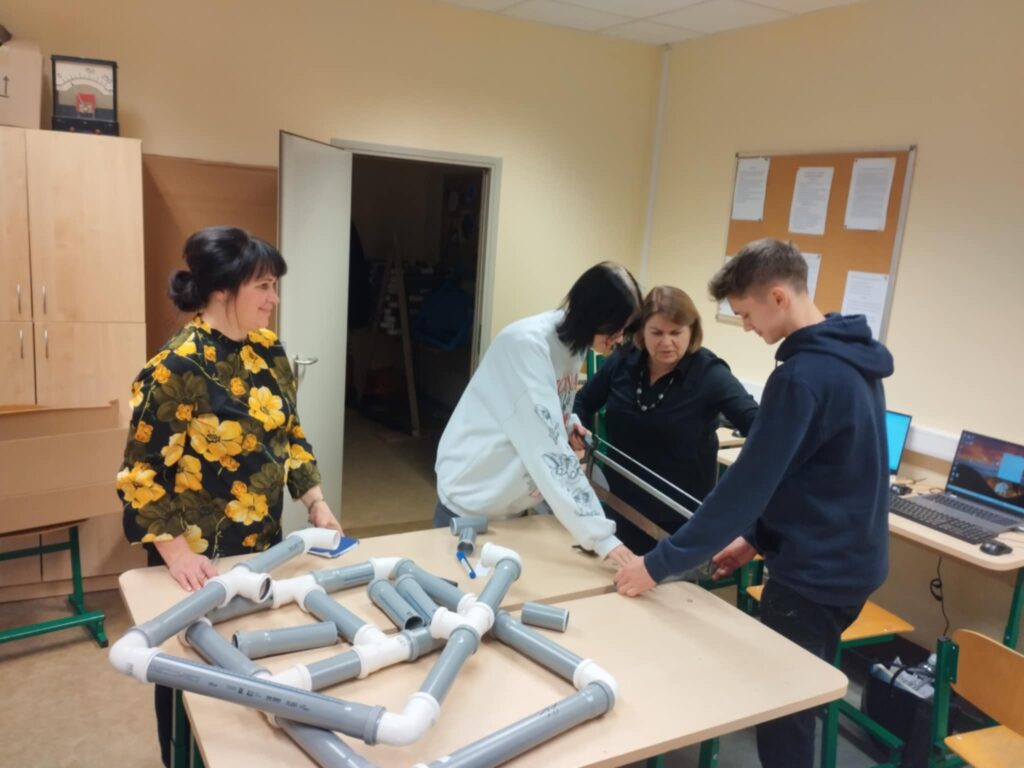
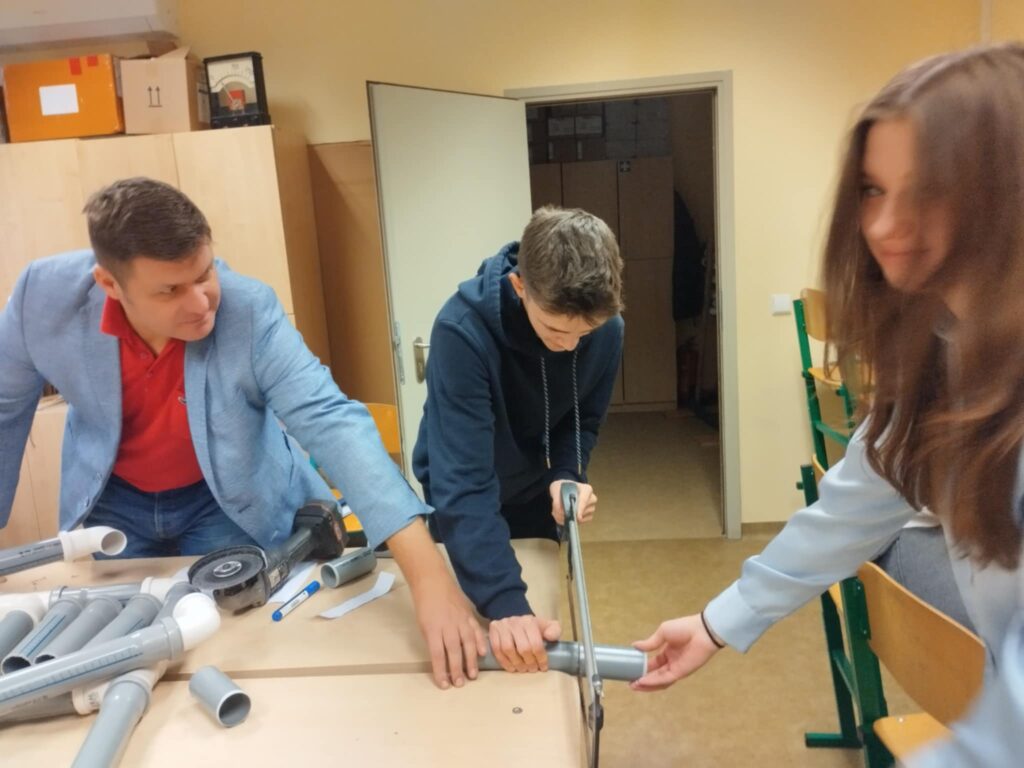
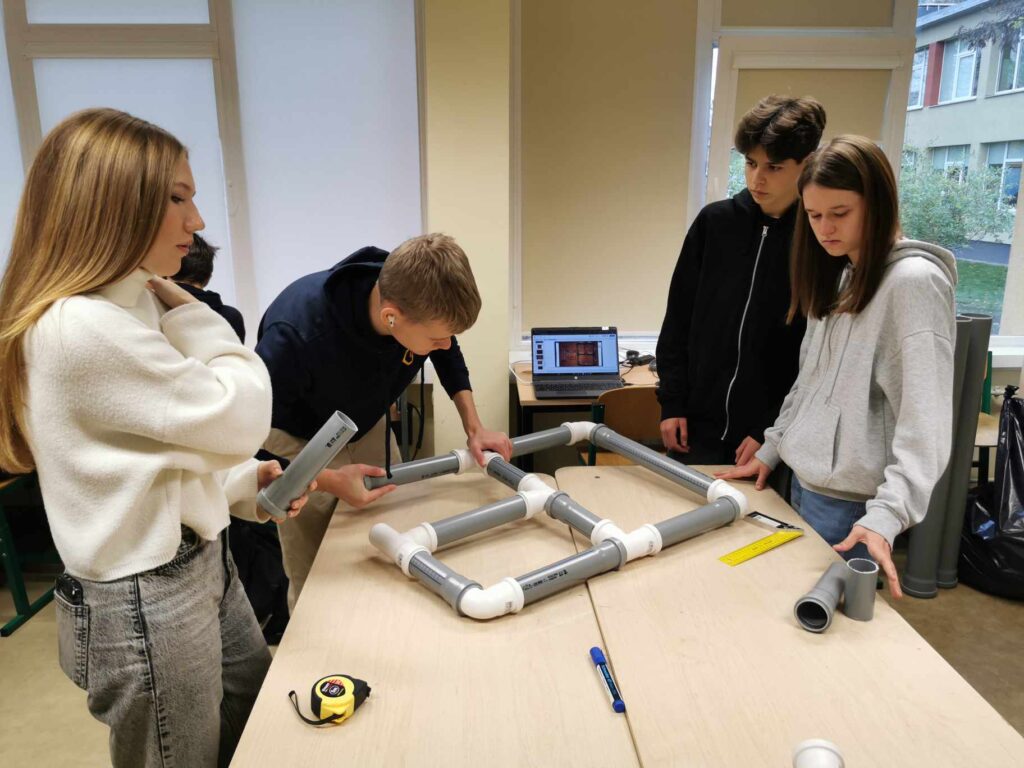
Students are not only working on the development of robotic ships, but also participating in various activities that stimulate their creativity, scientific curiosity and teamwork. The classes cover computer science, physics and engineering disciplines, so students from different grades have the opportunity to get involved in this process.
During chemistry classes, students examined the water of the Neris River. They determined the concentration of ammonium ions NH4+ using a titration method, and the amount of dissolved oxygen, biochemical oxygen consumption, and pH of the water body.
Video from the chemistry classes: LINK
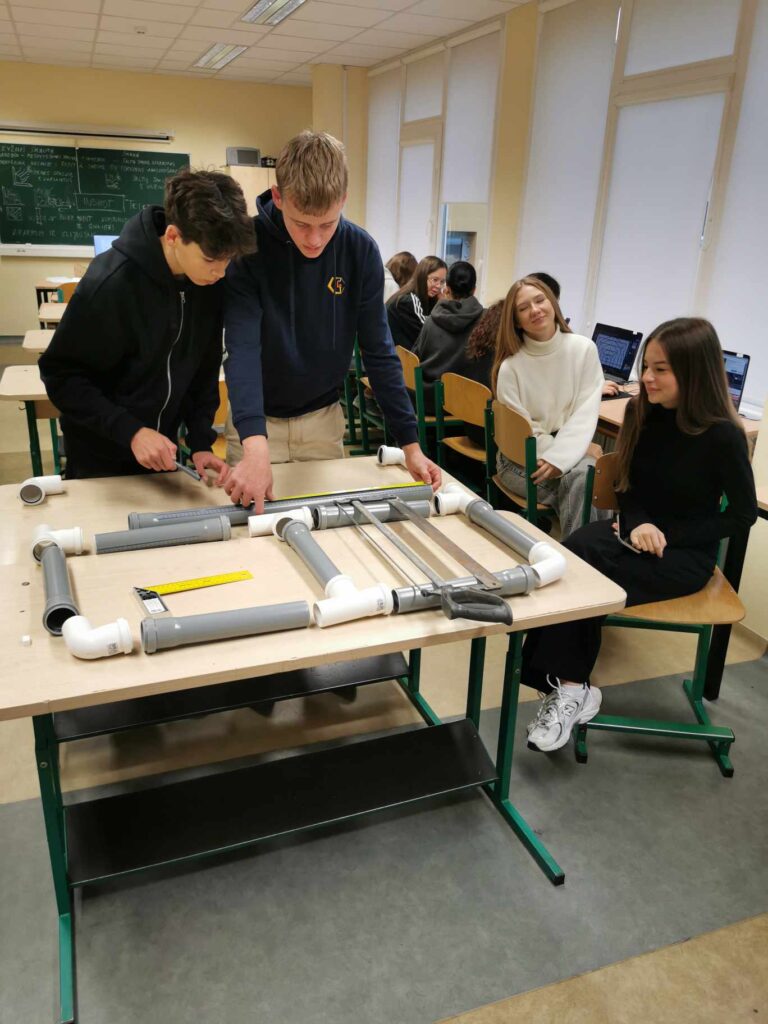
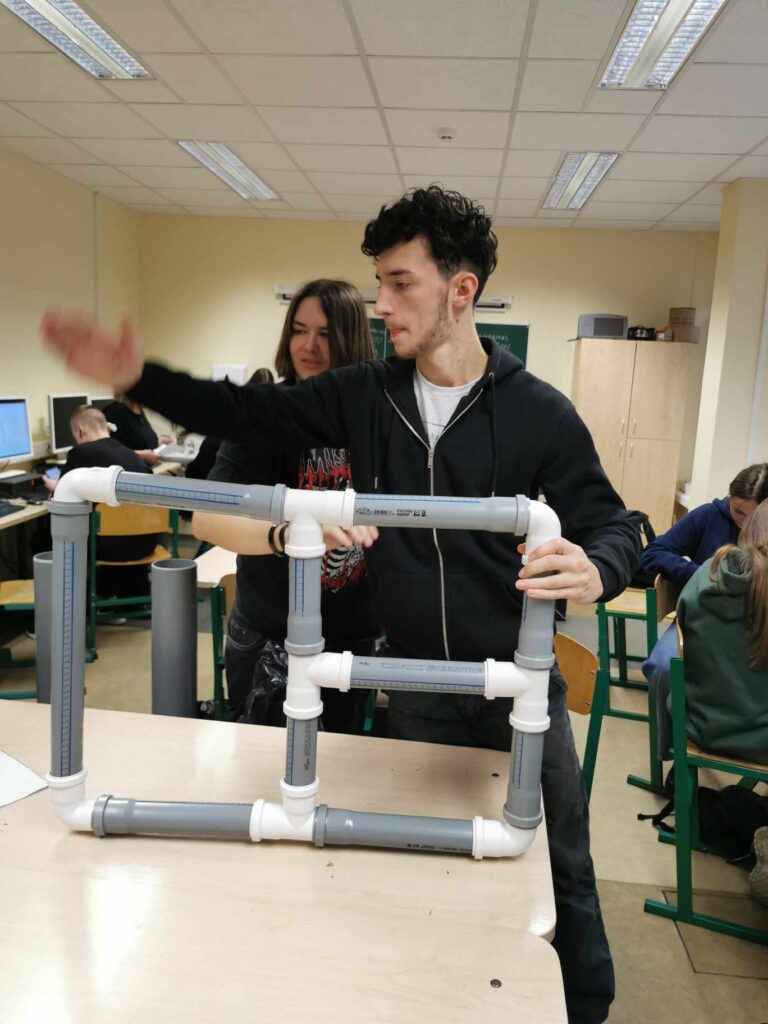
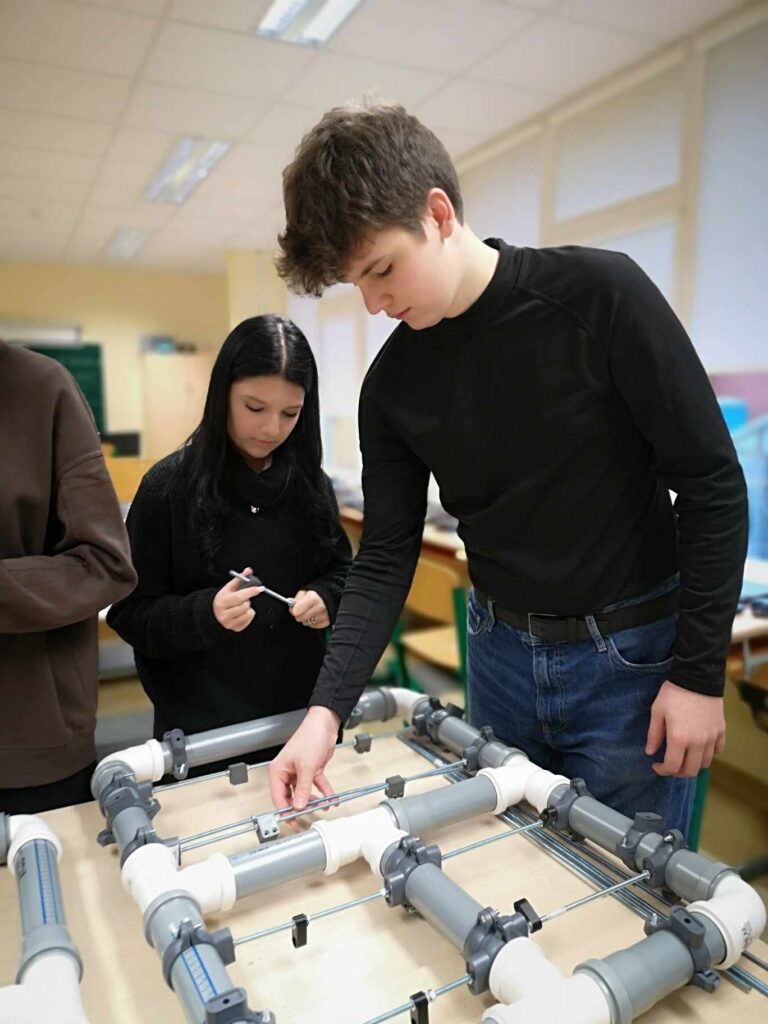
The students are very interested in learning how robotic systems work, and especially how electronics and programming can contribute to ecological research. “I can’t wait to see how the boat we created will start working when we put the electronics in. It’s very exciting and inspiring!” says one of the 11th grade students who is contributing to the boat building.
Teachers involved in the project also note the enthusiasm and creativity of the students. “It is very gratifying to see how the students apply their knowledge to solve real problems. They enjoy working in groups, which not only develops teamwork, but also allows them to develop their own problem-solving skills,” says the computer science teacher.
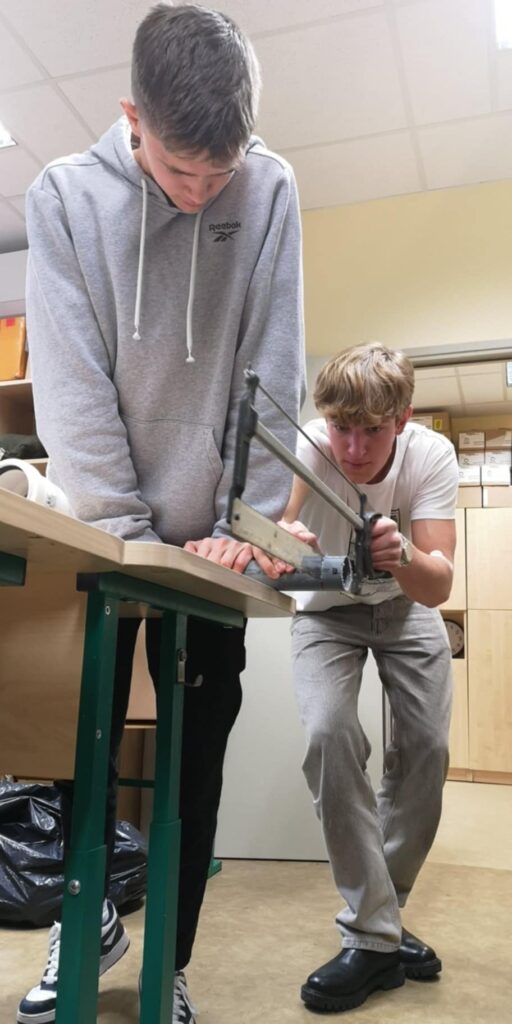
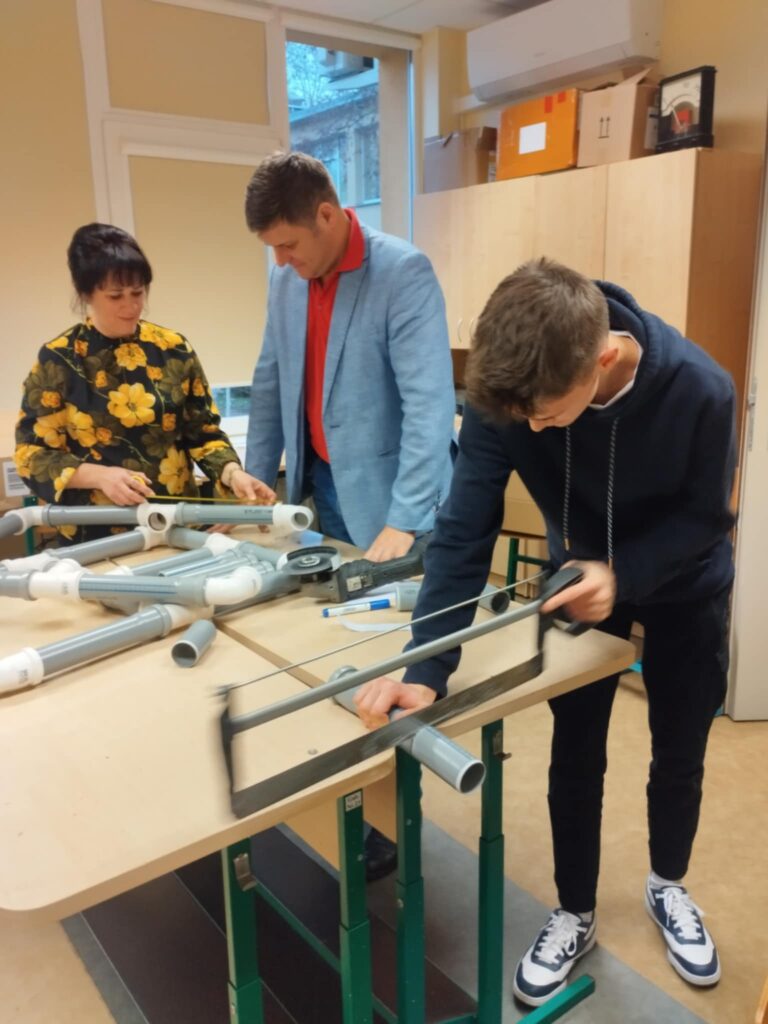
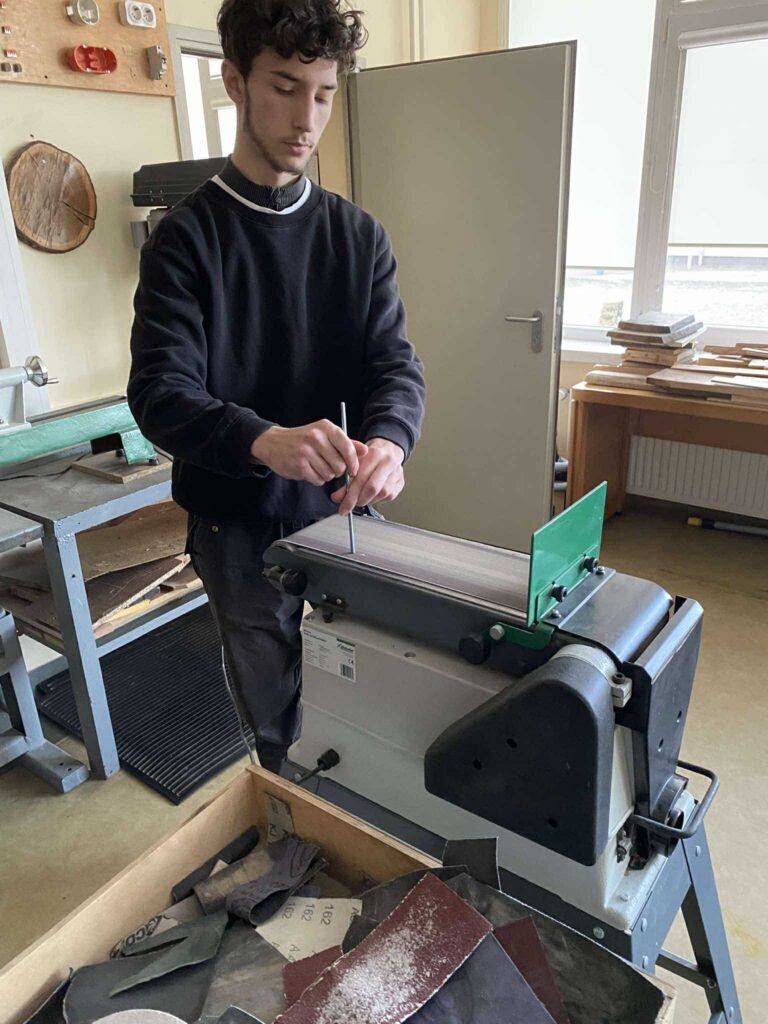
When the boats are fully equipped with sensors and remote control, they will be tried out on water. Students will have the opportunity to practically test their solutions and find out what kind of a message Lithuanian rivers and lakes send about their condition.
Recently, Vilnius has been officially declared the European Green Capital 2025. Therefore, the gymnasium is also very motivated to be involved in strengthening sustainability, ecology and environmental protection and aims to become the ambassadors of this initiative.
On May 19-23, 2025, an international event will be held in the gymnasium – the #SAILTUNITIES HACKATON. Youth teams from Estonia, Romania, Italy, Malta and Lithuania will compete in various nominations, developing innovative solutions for the study of water quality and pollution in water bodies. The concept of the project is reflected in the main slogan of the hackathon: “What would water like to tell us? Let’s hear its message!”
All of this shows how this project not only provides students with the opportunity to deepen their knowledge in scientific fields, but also promotes interest in ecology and sustainability.
